 Article by Carsten Cumbrowski, April, 24th 2006, Updated August 20th, 2006
Article by Carsten Cumbrowski, April, 24th 2006, Updated August 20th, 2006A short review of the new Google Service after two months since its introduction to the general public.
Introduction
About two months ago, Google announced its new service (currently in beta) with the name "Google Pages" or "Google Page Creator."
This service is intended to give average people and Internet newbies the ability to create a website via a free and easy-to-use tool. Blogs became mainstreamed more than a year ago and proved to be so easy to use that virtually anyone was able to start one and publish content without the need to take Internet 101 or Web Development classes.
Google Pages is geared toward the same audience. The difference between blogs and Google Pages is that blogs are meant to be a "journal" to publish recent news and events, not to record permanent content such as a family history or "About Me" pages. Google Pages tries to meet this need.
The high demand for this new service forced Google to disable the creation of new Google Pages accounts only a short time after it was announced. New accounts are available by invitation only.
I received an invitation end of April and started playing around with the new service to find out how far it had developed what you can do and cannot do with it. This article is a brief review of the current features and shortcomings of the service.
You can visit my Google Pages Test Pages to get an idea how pages created by this new service can look.
|
Sample Screenshots Click on a thumbnail to see the enlarged version of the image. | |||
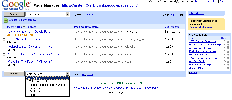 |
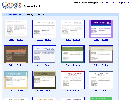 |
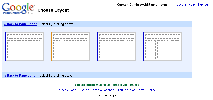 |
|
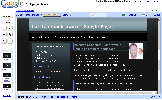 |
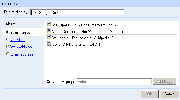 |
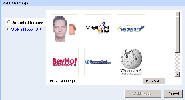 |
|
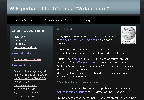 |
 |
 |
|
The Basic Layout
The first choice the user has to make is which of the four pre-defined layouts and 41 pre-defined designs he wants to use for his pages. There is no option to change a design or layout to custom specifications, which severely limits the possibilities to create unique-looking pages.
The Google Pages team obviously did not study how Blogger.com is solving this problem in an elegant way by providing the selection of templates with the ability, for more experienced users, to tweak after creating. Blogger.com is also owned by Google. I recommend that the Google Pages team meets with the Blogger.com team to learn from the years of experience the Blogger.com team already has with this issue.
The WYSIWYG Editor
The intuitive WYSIWYG editor is very easy to use, but has rather limited options. Only six fonts are available: Arial, Verdana, Times New Roman, Courier New, Georgia and Trebuchet. There are only four font sizes: small, normal, large and huge. There are 70 fixed colors; H1, H2 and H3 headlines; unsorted list (UL); bold or italic font formatting (no underline, superscript or strike through); links to other pages, files, email or external link; alignment of content: left, right and center; image (must be uploaded) with four fixed size options: small, medium, large and original size.
There is the option to edit the HTML code which you need to fall back on when it comes to creating "tables" or using additional HTML syntax not provided by the editor like "HR", sorted list, the mentioned font formatting or specific colors not available in the list of the 70 predefined choices.
What I also miss is a simple built-in spell checker. The Google Toolbar has one built in and there are various free solutions out there as well, such as the Lingucomponent Project from Open Office.
The Page and Image Management
Management of the individual pages is easy. Google Pages refers to pages by what you use in the predefined "title" area of a page. So far so good; but there is an issue when it comes to the page name used for the URL. The initial title specified for a new page is used for the page "file name" and cannot be changed afterward.
The Google Pages URL syntax is http://username.googlepages.com/pagename. Make sure that you give a new page a title that reflects the desired "file name" and change the title of the page to its real title afterwards. The inability to rename a page renders the "copy page" feature more or less obsolete. The copy of the original page is simply named "originalpagefilenamex" with X being a number starting with 2 for the first copy.
Accessing the uploaded images and deleting them is simple. The user must be careful though, because there is no indicator if an image is used in a "published" (live) page or not. Deleting a used image creates a broken image on the public site.
"Static" content is not an option
If you would like to have the same content for certain areas on all your pages, such as a footer or main navigation, you have a problem which can only be solved by cumbersome manual labor.
You cannot incorporate anything in your site template. This means that you have to recreate the static content for every page manually. If something changes, you have no choice but to update every single page of your site manually, one by one.
This is a major shortcoming that causes users to be inconsistent with the overall look and usability of their site.
No Javascript or iFrames
Javascript and iFrames are forbidden on your pages. If you add the code manually, it will be automatically removed by the page creator. This includes inline and external Javascript.
This means that you cannot add most of the common types of advertisements to your pages to monetize the site including Google AdSense ads, Amazon product ads, Linkshare DRMs or Chitika ads.
Further, you cannot use any Javascript to improve site usability.
General Tools are simply absent
Google Pages does not offer any type of tools to extend the features of the site beyond a small collection of static HTML pages with a little bit of content.
The ability to place AdSense ads on those pages should be of high interest to Google since it allows them to increase its advertising revenue. Any built-in function to place AdSense ads into Google Pages is nowhere in sight. I assume that this will be coming at one point because Google Pages is simply perfect for Google AdSense ads.
The ability to create any type of forms or in general ANY interactive content does not exist, which severely limits the use of Google Pages. This is something the Google Pages team should work on.
Providing features like a contact form that integrates with Google "gmail," the publishing of feeds from Google Reader or the integration of Google Maps and Google News would be perfect for Google Pages. Even Google Analytics cannot be added to the pages.
Indexing of Google Pages by Google Search
What I haven't found out yet is whether Google automatically adds Google Pages to the content to be crawled by its web crawler. A Search in the Google index reveals that over 46,000 Google Pages were already indexed and added to Google's Search Index as of today. This leads me to believe that the pages are in fact automatically crawled by Google.
Important Update 04/29/2006:
The account is now a bit over a week old and content has been up for about five days now.
The site is already in Google's index and here it comes: outranking a lot of old sites for the same key-phrase.
It ranked #17 (based on googlealert.com) and when I checked, was it still #17 for my company's name, Visionone,Inc. (#24 if you count the indent sub-results). It outranked over 100 other websites (our clients for the most part) with an estimated 487,000 Pages indexed by Google. I am absolutely speechless.
This is something for the SEO bloggers to blog about.
That this article links to it cannot be enough. It was posted on a few high ranking and Google-trusted sites, but that was two to three days ago. Ideas, anybody? For more details see my blog post: Google Pages - Fast Lane Into Google.
Conclusion
Google Pages is still in beta status for a good reason, and will probably remain in that status for quite a while. The existing features have many flaws and also a lot of very important features are entirely missing.
Google Pages does not interface with any other existing Google service, even though Google Pages is a perfect candidate to exploit and showcase a wide variety of existing Google services (live and beta). Google has a long way to go with this service to provide a useful tool for the general public.
I see its use today as a place where you can create some static pages with content to link to and from your blog at Blogger.com or other blogging services. It is certainly not enough for most people to create their complete homepage/presence on the Internet via Google Pages.
It might also be an alternative for some Geocities users since Google Pages does not show any third party advertisements anywhere on its pages.
| < previous Article/Stub | << Index | next Article/Stub > |
| Promoting Your Marketing Campaigns Via Your Affiliates - Part 1 | Articles Index | Affiliate Marketing 101 |
©2006 Carsten Cumbrowski
Replication of this Article, in full or in parts, without written permission by Carsten Cumbrowski is prohibited.
The original "free to re-print" version of this Article is available for download at several Re-Print Article directories.